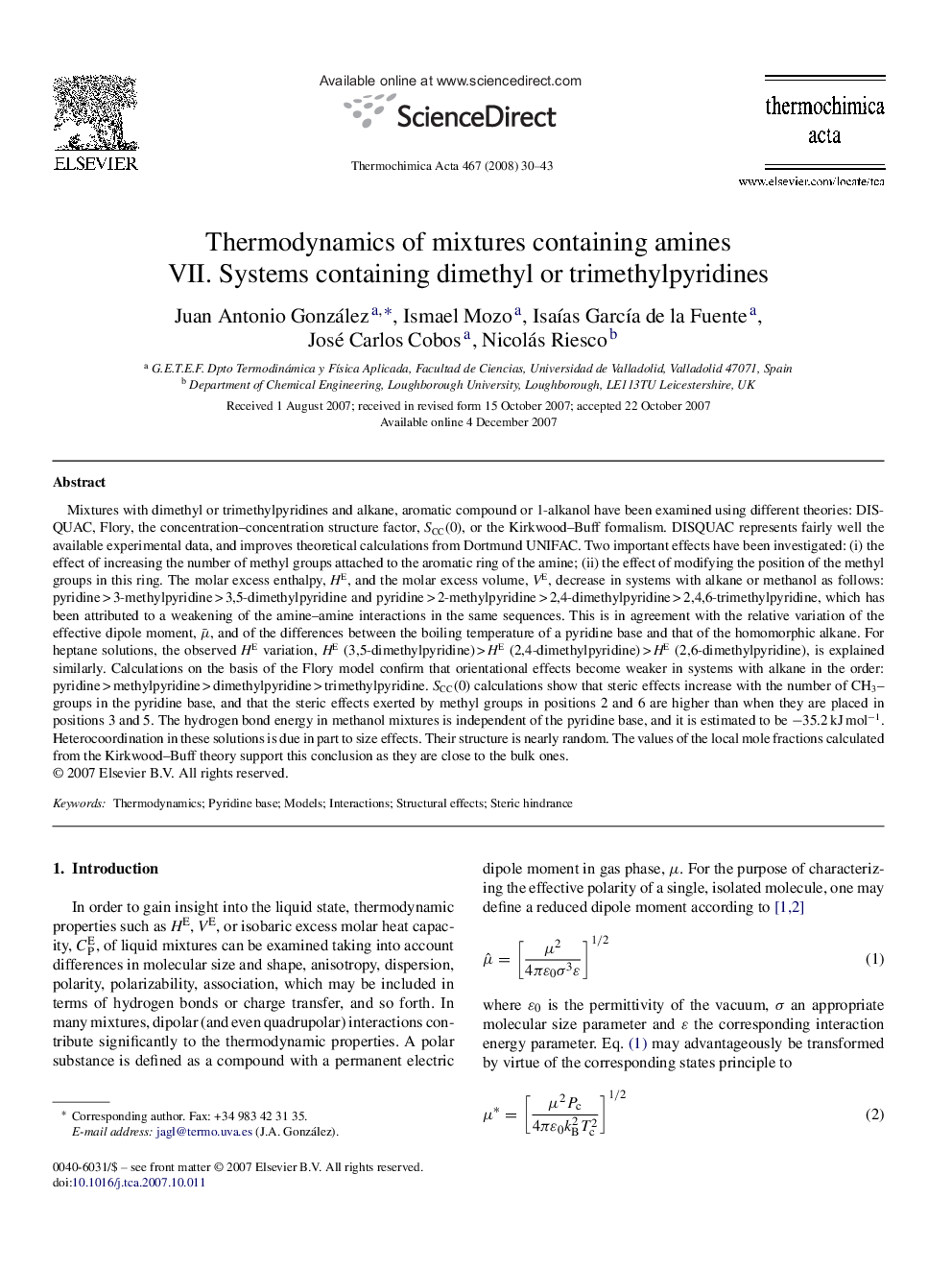| کد مقاله | کد نشریه | سال انتشار | مقاله انگلیسی | نسخه تمام متن |
|---|---|---|---|---|
| 675358 | 1459615 | 2008 | 14 صفحه PDF | دانلود رایگان |

Mixtures with dimethyl or trimethylpyridines and alkane, aromatic compound or 1-alkanol have been examined using different theories: DISQUAC, Flory, the concentration–concentration structure factor, SCC(0), or the Kirkwood–Buff formalism. DISQUAC represents fairly well the available experimental data, and improves theoretical calculations from Dortmund UNIFAC. Two important effects have been investigated: (i) the effect of increasing the number of methyl groups attached to the aromatic ring of the amine; (ii) the effect of modifying the position of the methyl groups in this ring. The molar excess enthalpy, HE, and the molar excess volume, VE, decrease in systems with alkane or methanol as follows: pyridine > 3-methylpyridine > 3,5-dimethylpyridine and pyridine > 2-methylpyridine > 2,4-dimethylpyridine > 2,4,6-trimethylpyridine, which has been attributed to a weakening of the amine–amine interactions in the same sequences. This is in agreement with the relative variation of the effective dipole moment, μ¯, and of the differences between the boiling temperature of a pyridine base and that of the homomorphic alkane. For heptane solutions, the observed HE variation, HE (3,5-dimethylpyridine) > HE (2,4-dimethylpyridine) > HE (2,6-dimethylpyridine), is explained similarly. Calculations on the basis of the Flory model confirm that orientational effects become weaker in systems with alkane in the order: pyridine > methylpyridine > dimethylpyridine > trimethylpyridine. SCC(0) calculations show that steric effects increase with the number of CH3– groups in the pyridine base, and that the steric effects exerted by methyl groups in positions 2 and 6 are higher than when they are placed in positions 3 and 5. The hydrogen bond energy in methanol mixtures is independent of the pyridine base, and it is estimated to be −35.2 kJ mol−1. Heterocoordination in these solutions is due in part to size effects. Their structure is nearly random. The values of the local mole fractions calculated from the Kirkwood–Buff theory support this conclusion as they are close to the bulk ones.
Journal: Thermochimica Acta - Volume 467, Issues 1–2, 30 January 2008, Pages 30–43